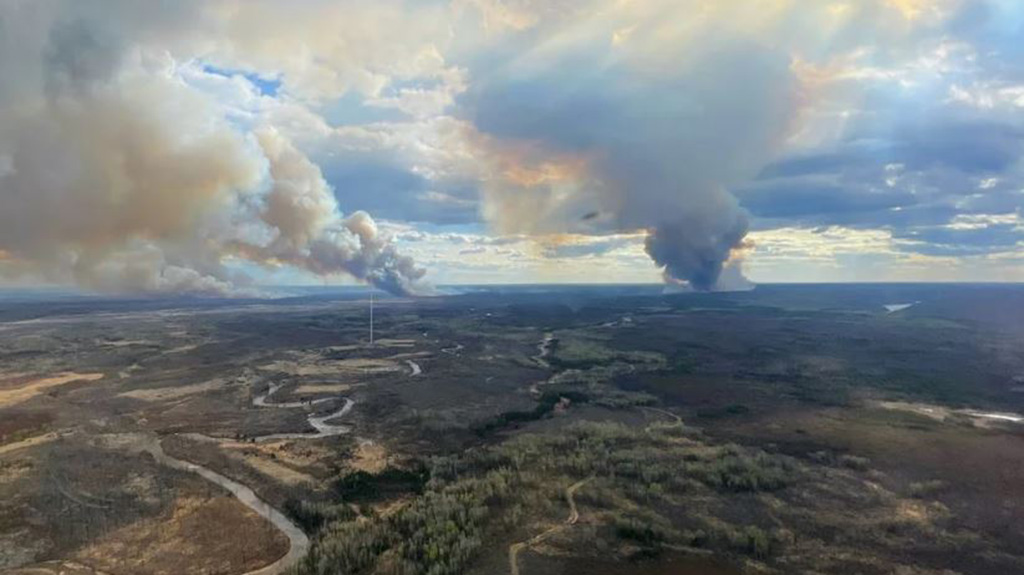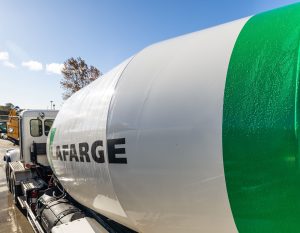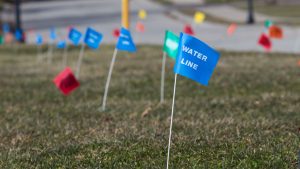FORT MCMURRAY, ALTA. — Bright red hoses thicker than a thigh snake along the highways near Fort McMurray, studded with cannons that can blast enough water into fire-threatened ditches to fill an Olympic-sized swimming pool every 90 minutes.
The soakers help protect buildings, homes and vital routes into and out of the Alberta city against wildfire flames that have forced the evacuation of four neighbourhoods. They’re just one of the lessons learned after the catastrophic wildfire that scorched the oilsands hub in 2016.
“The system was designed after 2016,” said Derek Sommerville, a wildfire specialist with the Alberta company Fire and Flood Emergency Services.
“We can cover large distances. That frees up traditional mobile resources like fire trucks and helicopters to deal with higher priority areas.”
The hoses, six kilometres of them, powered by a battery of 600-horsepower pumps, are an example of how Alberta seems better prepared to face such threats than it was eight years ago.
“They’re definitely a little better prepared with the notices that came out,” said David Warwick, a resident of one of the evacuated neighbourhoods.
Lloyd Sawatzky also believes the province’s approach has improved. He came from the community of Slave Lake to help direct traffic and conduct checks in the vacated areas at the request of the new Regional Emergency Operations Centre.
“This is the first year they did it,” Sawatzky said.
Jody Butz, the fire chief in charge of the Fort McMurray region, said the highway is open and day-to-day life continues in many parts of the region.
Still, 6,600 evacuated residents are likely to remain out of their homes until at least Tuesday. The rest of the city and other surrounding subdivisions remain under evacuation alert.
This year’s fire is burning along the ground instead of leaping from tree crown to tree crown. While that means it doesn’t move as fast, such fires can burn hotter and be just as hard to fight.
In Beacon Hill, one of the evacuated neighbourhoods, police kept watch under a sky of light haze as a handful of residents returned home briefly to grab vital but forgotten supplies, such as prescription medicines. Nearby, fire crews squirted orange fire-retardant gel on bushes.
The fire moved to within five kilometres of the intersection of Highway 63 and Highway 881, the main southern route out of the municipality, and about six kilometres from the Fort McMurray landfill on the city’s outskirts.
It had grown to 210 square kilometres in size.
Josee St-Onge, an Alberta Wildfire information officer, said favourable winds should push the fire from the city, but weather can change at any point.
Another much smaller wildfire has popped up, about three kilometres north of Fort McMurray, west of Highway 63 and north of Parsons Creek.
Officials say this new blaze, poses no threat to the community at this time.
This is the second time Fort McMurray, a city of 68,000, has been forced to flee the flames. In 2016, a wildfire nicknamed The Beast destroyed well over 2,000 homes and forced 80,000 out of the city and surrounding area.
In Edmonton, Alberta Premier Danielle Smith said she sympathizes with those who have left, but public safety is paramount. She said those displaced by fire evacuations will be eligible to receive $1,250 per adult and $500 per child after a week.
Other fires across Western Canada have forced residents out of their homes.
In northeastern British Columbia, a widening area around Fort Nelson, a town of 4,700, remained under evacuation. As of early Wednesday evening, the Parker Lake fire covered some 127.41 square kilometres.
Rob Fraser, mayor of the Northern Rockies Regional Municipality, urged residents not to return to their homes after RCMP had to relocate a safety checkpoint outside the community. He said emergency crews need to focus on fighting fires rather than looking out for people heading into harm’s way.
The BC Wildfire Service said light rain and cooler temperatures were in the forecast and could stop the fire from spreading closer to the town.
In Manitoba, about 500 people remained out of the remote northwestern community of Cranberry Portage.
Officials said a fire there is about 80 per cent contained and, if things go well, residents could be back in their homes this weekend.
©2024 The Canadian Press











Recent Comments
comments for this post are closed